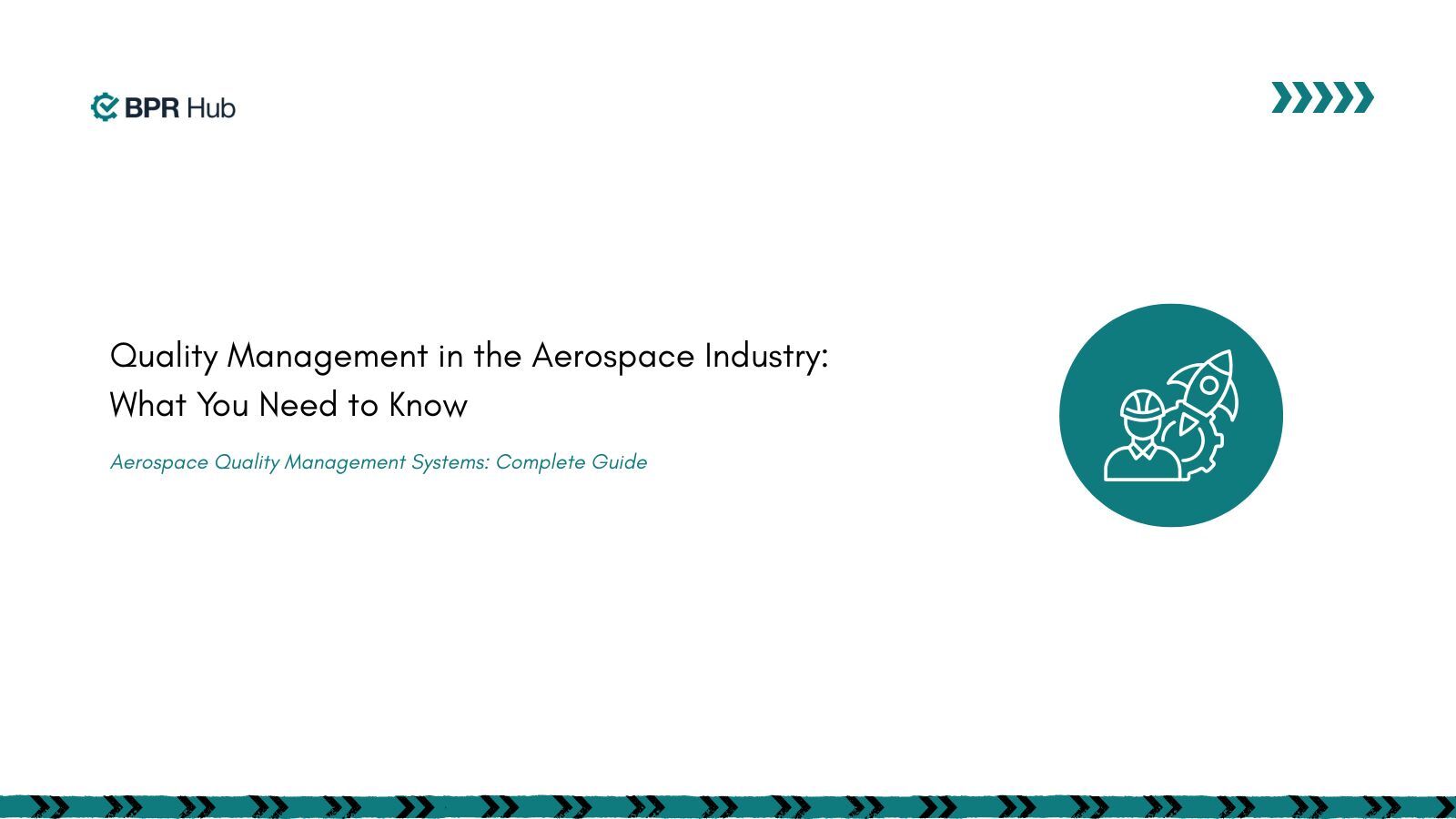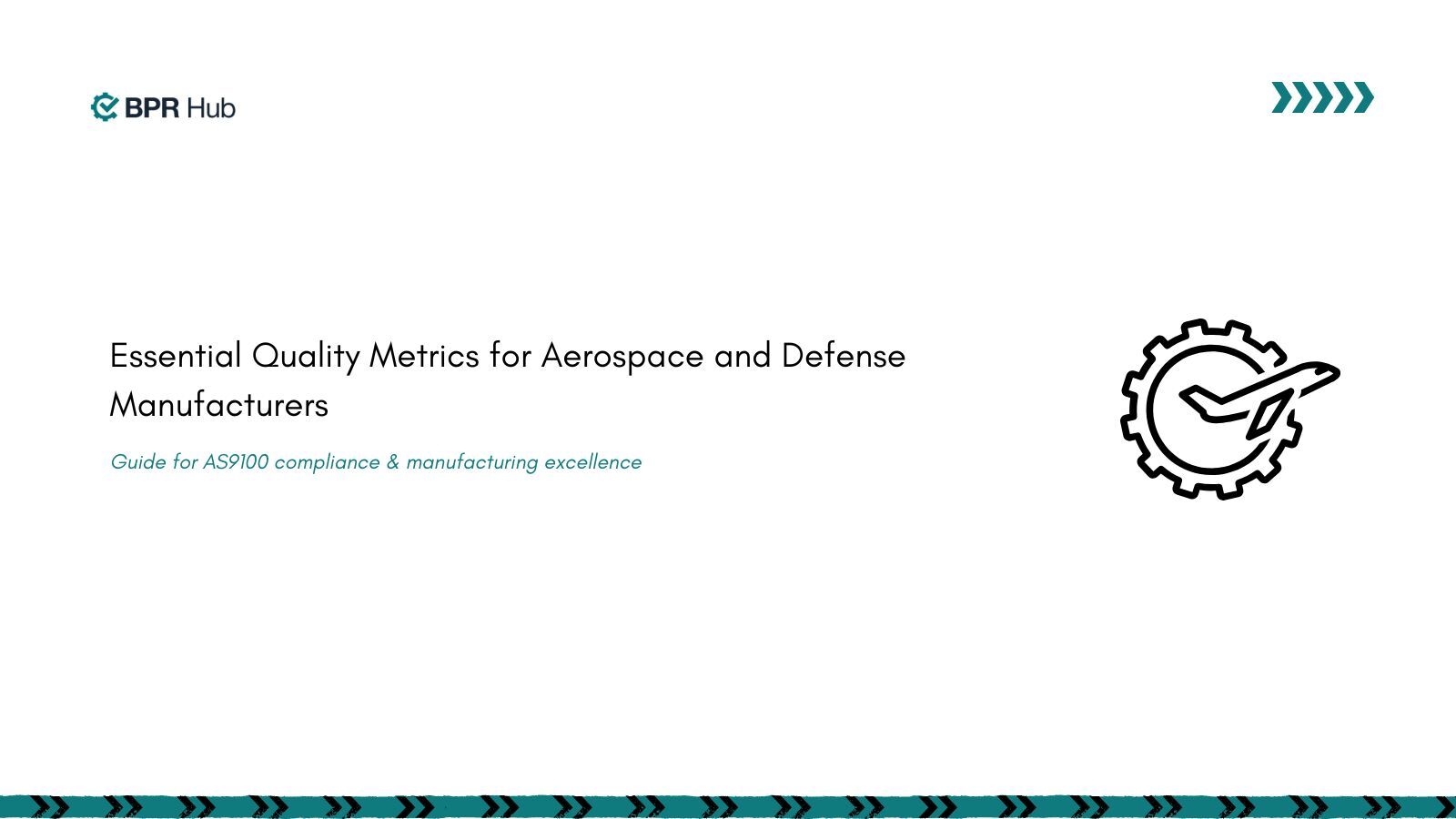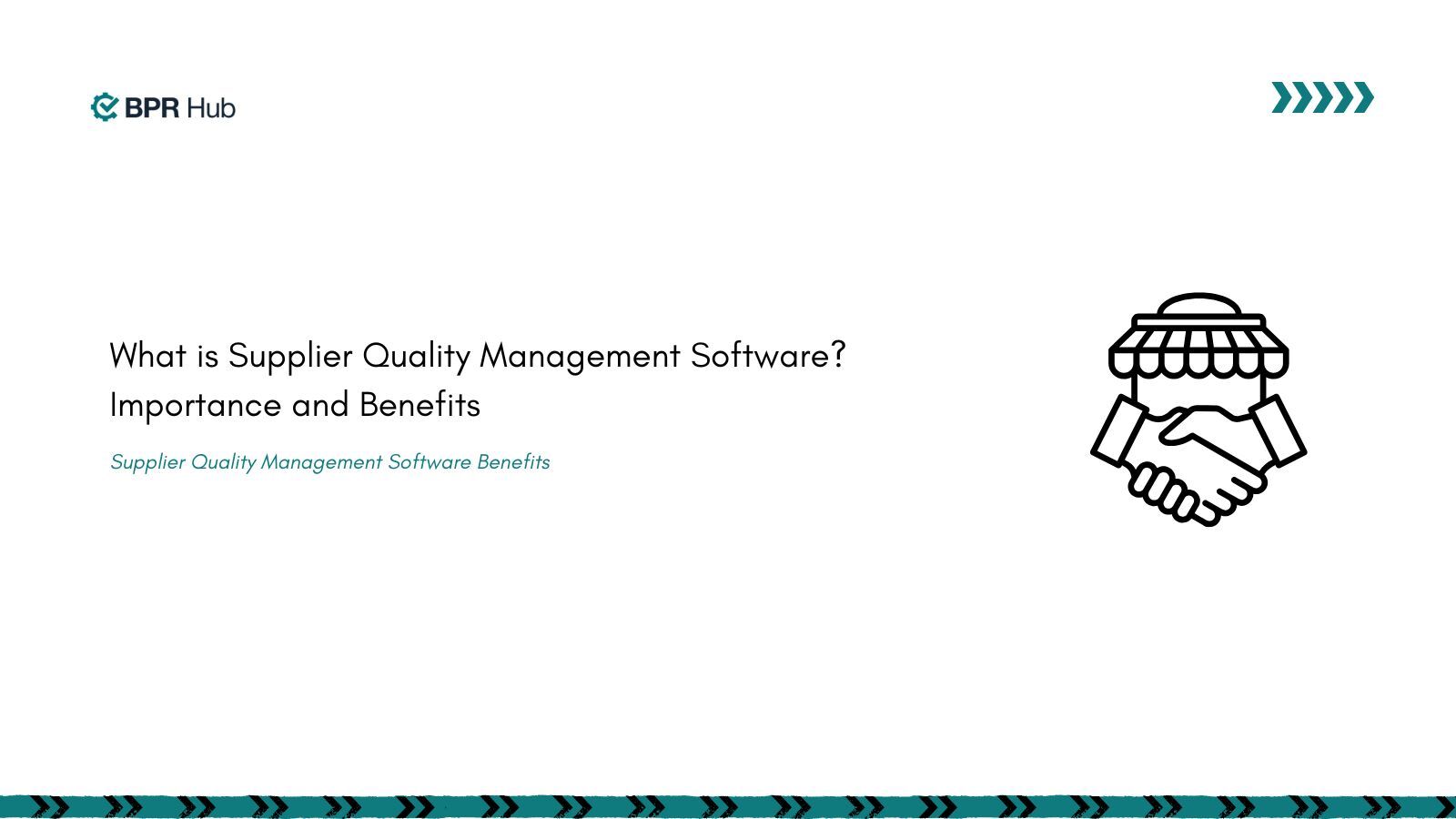Managing supplier quality has become increasingly complex in today's interconnected global economy. According to Future Market Insights, the global supplier quality management applications market is projected to grow from USD 14,061.6 million in 2025 to USD 38,081.4 million by 2035, reflecting a strong CAGR of 10.5%. This growth signals that manufacturers worldwide are recognizing the critical importance of robust supplier quality management for operational excellence and competitive advantage.
According to a survey by Gatepoint Research, 84% of manufacturing executives identified improving supplier quality as their top priority for direct supplier management. Yet despite this recognition, many organizations struggle with persistent challenges that can derail production schedules, increase costs, and damage customer relationships. The consequences of poor supplier quality extend far beyond immediate financial impacts; they can fundamentally undermine a company's ability to scale and compete effectively in the marketplace.
Understanding these challenges is not only crucial for achieving ISO 9001 compliance but also for maintaining operational excellence. This comprehensive guide explores the most pressing supplier quality management challenges facing manufacturers today and provides actionable solutions to transform these obstacles into opportunities for growth and operational excellence.
What Is Supplier Quality Management (SQM)?
Supplier quality management serves as the strategic framework that enables organizations to evaluate, monitor, and continuously improve the quality of products and services delivered by their supply chain partners. At its core, SQM is about risk mitigation and operational efficiency - helping organizations prevent quality issues, reduce supply chain disruptions, and maintain product consistency.
SQM platforms integrate multiple functions, including supplier qualification, performance monitoring, compliance tracking, audit management, and corrective action workflows. These systems transform traditional reactive approaches into proactive, data-driven strategies that anticipate and prevent quality issues before they impact production or customer satisfaction.
A well-implemented supplier quality management process encompasses five critical stages: supplier evaluation and qualification, performance monitoring through key metrics, regular audits and assessments, collaborative improvement initiatives, and continuous risk assessment. Each stage builds upon the previous one to create a robust ecosystem of quality assurance that extends across the entire supply chain.
Why Supplier Quality Management Matters for Businesses
In an era where supply chains span continents and customer expectations continue to rise, effective supplier quality management has evolved from a departmental function to a strategic business imperative. Research indicates that organizations with robust supplier quality management programs demonstrate significantly greater supply chain resilience during disruptions.
Supplier quality management directly impacts four critical business dimensions: operational efficiency, regulatory compliance, cost management, and brand reputation. When suppliers consistently meet quality standards, manufacturers can reduce inspection costs, minimize production delays, and eliminate costly rework or recalls. According to industry estimates, quality-related costs can amount to as much as 15-20% of a company's sales revenue, sometimes reaching even higher levels, making supplier quality a significant driver of profitability.
Beyond cost considerations, effective supplier quality management enables manufacturers to meet increasingly stringent regulatory requirements across industries. In highly regulated sectors such as pharmaceuticals, aerospace, and medical devices, compliance failures can result in production shutdowns, regulatory penalties, and serious reputational damage. A robust SQM ensures that suppliers maintain the necessary certifications and documentation to support continuous compliance.
Eliminate Supplier Risks and Elevate Quality Performance with BPR Hub
📍 Book a Demo
📧 hello@bprhub.com
Common Supplier Quality Management Challenges
1. Limited Visibility into Supplier Processes
Limited insights into multi-tier suppliers create blind spots, leaving organizations vulnerable to risks hidden deep in the supply chain. Traditional supplier relationships often operate on trust-based models with minimal real-time data sharing, creating information gaps that mask declining performance trends, emerging compliance risks, or capacity constraints.
The challenge intensifies with global supply chains where suppliers may operate under different regulatory frameworks, cultural norms, and quality standards. Language barriers and time zone differences further complicate communication and data collection efforts, making consistent oversight difficult.
2. Inconsistent Supplier Evaluation and Risk Management
Many organizations lack standardized processes for evaluating and managing supplier risk, leading to inconsistent decisions and missed warning signs. Early warning signs like deteriorating quality, delivery performance issues, price increases, and management turnover often go unnoticed without systematic monitoring processes.
Inconsistent evaluation criteria across departments or regions result in disparate supplier standards and conflicting performance assessments. The absence of real-time risk monitoring means manufacturers often discover supplier issues reactively, after problems have already impacted production.
3. Lack of Real-Time Data and Reporting
While many organizations have digitized basic processes, they often lack integrated platforms providing real-time insights into supplier performance. Fragmented data systems prevent comprehensive supplier scorecards or performance trend identification.
The absence of automated reporting forces quality teams to spend significant time on manual data collection rather than strategic improvement initiatives, reducing overall effectiveness and delaying critical decisions.
4. Communication Gaps Across Teams and Suppliers
According to TraceLink's research, most interactions between companies and supply chain partners happen via email, phone calls, and meetings. These methods create challenges, including a lack of transparency, difficulty tracking action items, and inconsistent information sharing.
Poor communication protocols result in misaligned expectations regarding quality requirements, delivery schedules, and performance standards. Internal gaps between procurement, quality, and operations teams create inconsistencies in supplier management approaches.
5. Over-Reliance on Manual, Repetitive Tasks
Heavy reliance on spreadsheets or outdated tools increases error likelihood and inefficiencies. Many procurement teams globally continue to underutilize automation capabilities, creating operational challenges, including increased error rates, inconsistent data collection, and excessive administrative workload.
Manual processes are particularly problematic for supplier audits, performance evaluations, and compliance tracking, limiting scalability and making it difficult to manage larger supplier networks effectively.
6. Difficulty Maintaining Supplier Compliance
Regulatory requirements continue evolving across industries, creating ongoing compliance challenges. The complexity of managing compliance across multiple regulatory frameworks becomes particularly challenging for manufacturers operating in global markets with distinct regional requirements for product safety, environmental standards, or labor practices.
How to Overcome Supplier Quality Management Challenges
1. Implement a Centralised Supplier Quality Management
The foundation of effective supplier quality management lies in implementing a centralized platform that consolidates all supplier-related data, processes, and communications. Supplier Quality Management Software provides a centralized, automated, and data-driven solution to streamline every aspect of supplier quality, from onboarding and audits to performance tracking and continuous improvement.
A centralized system enables real-time visibility into supplier performance across multiple metrics, eliminating data silos and ensuring consistent evaluation criteria. This approach allows quality teams to identify trends, benchmark performance, and make informed decisions based on comprehensive data rather than fragmented information from multiple sources.
SQM platforms integrate with existing enterprise systems such as ERP and MES, creating seamless data flows that enhance operational efficiency. This integration eliminates duplicate data entry, reduces errors, and ensures that all stakeholders have access to current supplier information.
BPRHub's unified compliance framework provides manufacturers with the centralized capabilities needed to manage supplier quality across multiple standards simultaneously. By consolidating ISO, FDA, and other regulatory requirements into a single platform, organizations can streamline supplier compliance tracking and reduce the administrative burden associated with managing complex regulatory environments.
2. Automate Quality Audits and Performance Tracking
Automation ensures the scorecard reflects the latest performance data, and no manual updates are needed. Implementing automated audit and performance tracking systems transforms reactive supplier management into proactive quality assurance that identifies and addresses issues before they impact production.
Automated systems can schedule regular audits based on supplier risk profiles, track corrective action completion, and generate performance scorecards that provide objective assessments of supplier capabilities. Predictive analytics capabilities flag issues before they escalate, ensuring quick resolution, enabling quality teams to address problems proactively rather than reactively.
Digital audit platforms eliminate the inconsistencies associated with manual audit processes while providing standardized evaluation criteria across all suppliers. This consistency ensures fair and objective assessments that support informed decision-making about supplier relationships and development opportunities.
3. Improve Supplier Collaboration and Communication Tools
BPR Hub offers a centralized platform where organizations and suppliers collaborate on quality improvements, eliminating email-based supplier management. Collaboration platforms enable suppliers to upload compliance documents, submit performance reports, and participate in corrective action processes through secure interfaces.
Real-time communication capabilities enable faster response times to quality issues while creating audit trails supporting compliance documentation requirements.
4. Standardise the Supplier Quality Management Process
Standardization creates consistency in supplier evaluation while ensuring all quality management activities align with organizational objectives and regulatory requirements. Developing standardized workflows for supplier onboarding, performance evaluation, and corrective action management eliminates variability that can compromise quality outcomes.
5. Build Continuous Monitoring and Improvement Cycles
Continuous monitoring evaluates suppliers based on real-time inputs, transforming periodic supplier reviews into ongoing performance management. Real-time monitoring systems track key performance indicators, providing immediate visibility into supplier performance trends, enabling proactive intervention.
Best Practices to Strengthen Your Supplier Quality Management
Implementing best practices in supplier quality management requires a holistic approach addressing organizational, technological, and relationship factors. Organizations should develop clear supplier development programs providing training, resources, and support to help suppliers improve capabilities while focusing on long-term partnerships rather than transactional relationships.
Risk-based approaches ensure resources are allocated effectively, with higher-risk suppliers receiving more intensive oversight. Technology adoption should focus on platforms providing comprehensive functionality while integrating with existing systems.
How BPR Hub Helps with Supplier Quality Management
BPR Hub's comprehensive Quality, Compliance, and Governance (QCG) platform addresses fundamental supplier quality management challenges through integrated, automated solutions. The platform's unified compliance framework enables manufacturers to manage over 30 regulatory standards simultaneously, reducing complexity associated with multi-standard supplier compliance.
The platform's real-time monitoring capabilities provide continuous visibility into supplier performance, enabling proactive identification of quality issues and compliance risks. Automated escalation workflows ensure quality problems are addressed promptly, while collaborative features facilitate effective communication and partnership development with suppliers.
Through its integrated approach to quality, compliance, and governance, BPR Hub enables manufacturers to transform supplier quality management from reactive compliance activity into a strategic differentiator, driving operational excellence and competitive advantage.
Transform Your Supplier Quality Management Today with BPR Hub
📍 Book a Demo
📧 hello@bprhub.com
Key Takeaways
→ Supplier quality management is evolving from reactive oversight to proactive partnership, with market growth reflecting increased recognition of its strategic importance
→ Common challenges, including limited visibility, inconsistent evaluation processes, and manual workflows, can be addressed through centralized, automated platforms
→ Effective solutions require integration of technology, standardized processes, and collaborative relationships that drive continuous improvement
→ Real-time monitoring and predictive analytics enable proactive identification and resolution of quality issues before they impact operations
→ Success depends on treating suppliers as strategic partners rather than transactional vendors, fostering collaborative relationships that drive mutual improvement
→ Comprehensive platforms like BPR Hub provide the integrated capabilities needed to transform supplier quality management into a competitive advantage
Frequently Asked Questions
What are the main components of an effective supplier quality management?
An effective supplier quality management includes supplier qualification processes, performance monitoring capabilities, audit management, corrective action workflows, and compliance tracking. Organizations implementing comprehensive quality management systems often see significant improvements in operational efficiency.
How can automation improve supplier quality management processes?
Automation eliminates manual errors, ensures consistent evaluation criteria, provides real-time performance monitoring, and enables proactive identification of quality issues. Platforms can significantly reduce manual effort while improving accuracy and consistency.
What metrics are most important for measuring supplier quality performance?
Key metrics include defect rates, on-time delivery performance, compliance rates, cost of poor quality, and corrective action closure times. Organizations can learn more about quality management metrics to enhance their measurement capabilities.
How often should supplier audits be conducted?
Audit frequency should be risk-based, with higher-risk suppliers receiving more frequent audits. Typically, critical suppliers are audited annually, while lower-risk suppliers are audited every 2 to 3 years.
What role does technology play in supplier quality management?
Technology enables real-time monitoring, automated reporting, predictive analytics, and collaborative communication. Platforms enhance supplier quality management by providing real-time data analysis and improving visibility into supplier performance.
How can organizations improve supplier collaboration and communication?
Implementing dedicated supplier portals, establishing clear communication protocols, and creating collaborative improvement programs enhance supplier relationships. Organizations can explore ISO compliance frameworks to structure their supplier collaboration efforts effectively
Get insights that help you minimize risks and maximize profits.
Dive deeper into manufacturing compliance with our free resources.
We get it, compliance can get tough.
Here are some additional resources to help.
We get it, compliance can get tough. Here are some additional resources to help.
Get updates in your inbox

.svg)
%20(1).svg)





%20(1).svg)

.avif)

